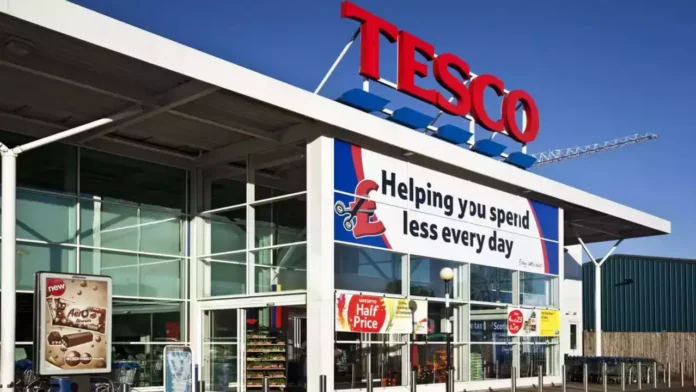Tesco, the largest retailer in Britain, projected a continued increase in profits, attributing it to early indications of enhanced consumer sentiment. This forecast comes after securing customers from competitors, which contributed to an 11% surge in the previous year.
CEO Ken Murphy expressed optimism for 2024, citing factors such as easing food inflation, reduced energy costs, and stable employment levels as reasons for his positive outlook.
On Wednesday, he informed reporters, “while acknowledging considerable uncertainty, I observe a gradual enhancement in customer sentiment, and I’m confident about the robust state of our business.”
His remarks echoed recent survey findings indicating a mitigation of Britain’s two-year cost of living crisis. The data suggests a growing confidence among UK consumers regarding their financial prospects, with fewer individuals facing difficulties in paying their bills compared to the previous year.
Continue Exploring: Supermarket giants Tesco, Woolworths, and Shoprite launch $125 Million venture fund for retail innovation
The supermarket chain, commanding a 27.3% share of Britain’s grocery market, saw a 40 basis points increase over the previous year. It anticipates its retail adjusted operating profit, a crucial profitability metric, to reach “at least” £2.8 billion ($3.55 billion) for the fiscal year 2024/25.
In the fiscal year ending on February 24, 2024, it generated £2.76 billion, slightly surpassing the guidance of £2.75 billion and marking an increase from £2.49 billion in the preceding year.
Sales rose 7.4% to £61.5 billion after gasoline, VAT, sales tax, and other excise taxes were subtracted. UK like-for-like sales increased by 7.7%. An increase in volumes, or the number of products sold, which was especially noticeable in the second half of the period, supported this expansion.
Tesco’s shares rose by 3.8%, extending year-on-year gains to 12%.
“Customers are progressively choosing to shop at Tesco, as demonstrated by our growing market share, driven by their positive response to the enhancements we’ve implemented in both the value as well as the quality of our products,” Murphy said.
He emphasized the acquisition of customers from high-end retailers, noting that sales of the Tesco Finest brand surged by 15.7% during the year, surpassing £2 billion.
He mentioned that UK consumers continued to prioritize saving money by opting for home-cooked meals and entertaining at home instead of dining out.
Continue Exploring: Tesco responds to UK cost-of-living crisis: Shifts focus to affordable store-brand products amidst grocery inflation surge
Tesco was additionally reaping the rewards of its strategy to align prices with those of the discount chain Aldi on essential items, alongside the widespread appeal of its Clubcard loyalty program, offering discounted prices to its members.
Over the past two years, these initiatives have been funded by reducing costs within the business by £1.2 billion. An additional £500 million in savings is targeted for 2024/25.
Tesco increased its dividend by 11% and announced plans to repurchase an additional £1 billion worth of shares within the next year.
A top 40 investor in Tesco commented, “Maintaining robust investments in the business while distributing the remaining cash to shareholders appears to be a very prudent approach.”





